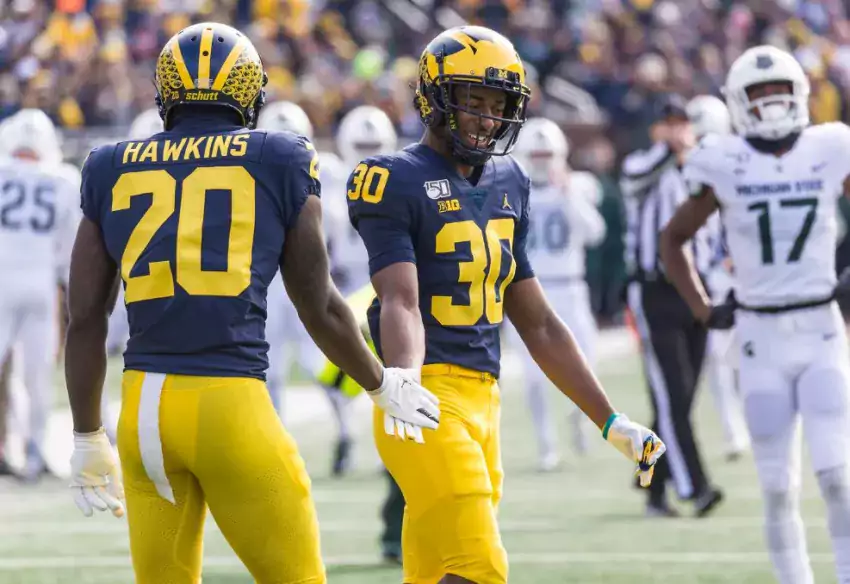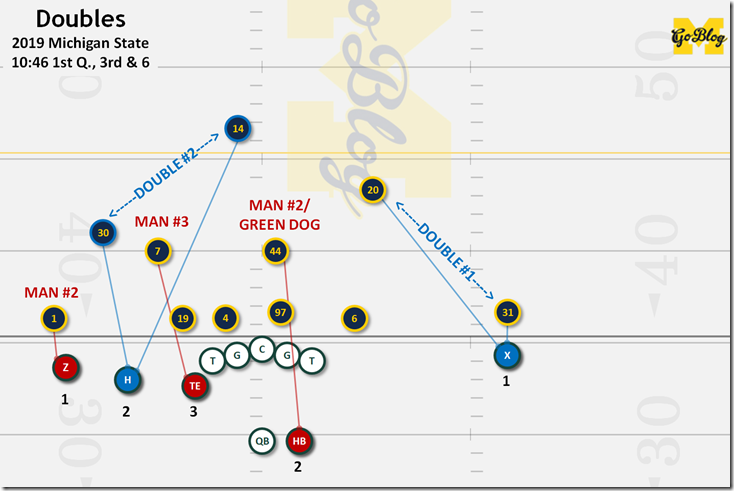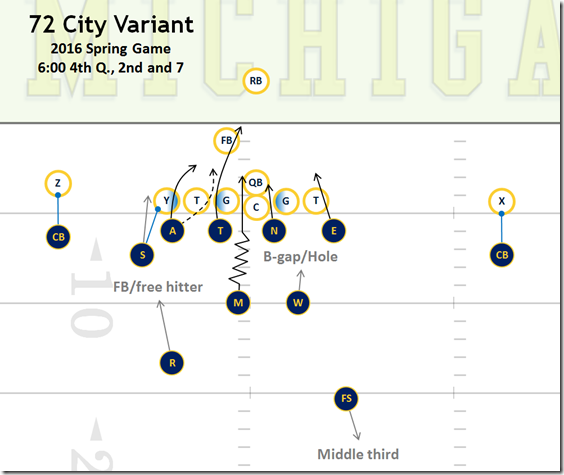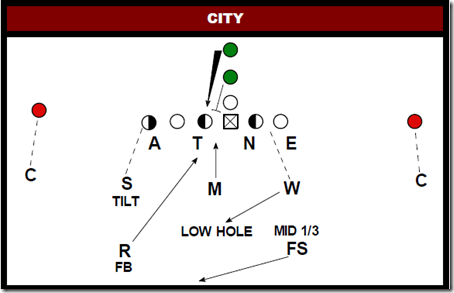man coverage

Matt Demorest, Realtor and Lender and I have brought back our (sometimes-)weekly video short. The purpose of these is to show you something on film that you as a fan will be able to pick up on when you see it in the future. This week's a good one, as we start talking about the different ways Michigan used motion and alignment to put Purdue defenders in spots where they were going to lose their man-to-man matchups massively. In the process we break down how Mesh works.
If you're in the housing market, Matt's the guy.
There is nothing after the jump because it's video content.

Usually in this space I like to talk about a thing that Michigan did differently to confound their opponent or add to the toolkit. This week, after a game when Harbaugh and his staff thoroughly outclassed Dantonio and his in all three phases, I'd like to discuss a thing Michigan has had in their kit for as long as Don Brown has been here, and how Michigan State came in with a gameplan to defeat it (and yes, how Michigan adjusted and went back to dominating).
That's because so many people were talking before, during, and after this game about Michigan's passing down coverage, what Gus Johnson, Joe Klatt and Urban Meyer were calling "Brackets Coverage" and which Brown, James Light, and this space shall call "Doubles."
Doubles Coverage
Unfortunately the guy who did the best job of explaining how Michigan prefers to defend passing downs was Urban Meyer, right before this game, so let's see what he had to say (I recommend the full video on Fox):
He's simplifying it, Urban's spread offensive mind thinking of it in terms of numbers: more defenders than offensive players over here, and over here, win: defense. But the basic gist of doubles coverage is understandable to every kid who's ever played playground football: play man and use the safeties to double-team two of the most likely receivers:
Even on this level, who gets doubled is the important part; the how they get doubled is getting into the weeds.
[Which we shall, after THE JUMP]
Backed up near their end zone after a 4th down stop, with Brandon Peters under center, the white team is looking to catch the defense with some play-action. What they catch is a pretty simple blitz, an iffy matchup in pass pro that goes badly, and a true freshman running for his life in the endzone. Let's dig into it.
THE PLAY: A pretty normal Mike blitz that gets interesting in the details.
The MLB came up trying to time his blitz, then blitzed the frontside A gap. The SAM has the tight end (Y) in man to man, as do the CBs with their respective wide receivers, and the free safety is playing the deep cover. The WLB has a run gap, and the short middle zone (which ends up being the RB). On the other side the Rover (strong safety) is responsible for the fullback.
So this is a variant on the base cover 1 ("City" in Brown's 2013 Boston College playbook).
I think "TILT" means the SAM has the edge if the TE stays in to block, and the TE if he goes out in a pattern. But there was some weirdness here, because the T and A are going to end up in the same lane.
[After the JUMP: freshman going off script, two-gapping, or a DE option?]



8